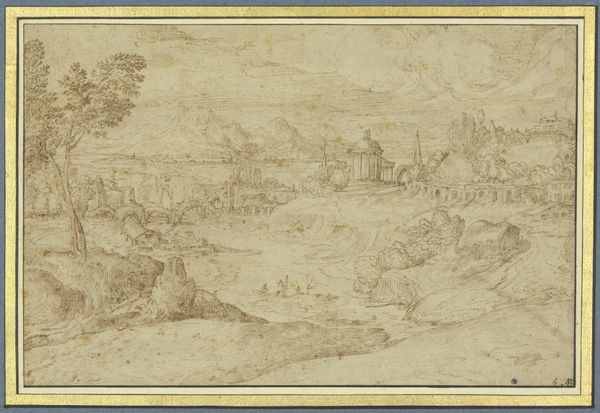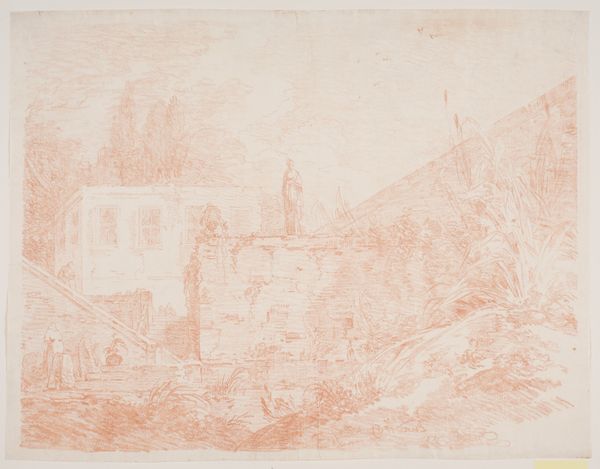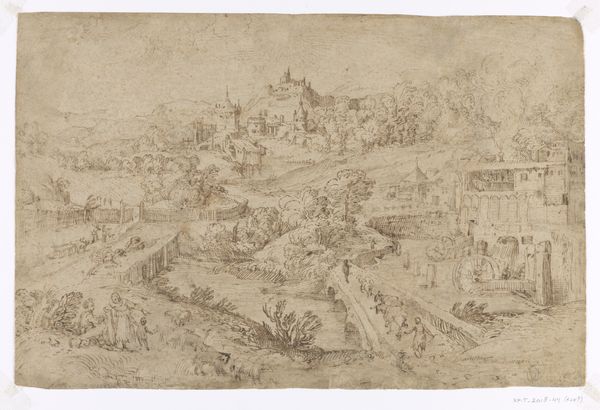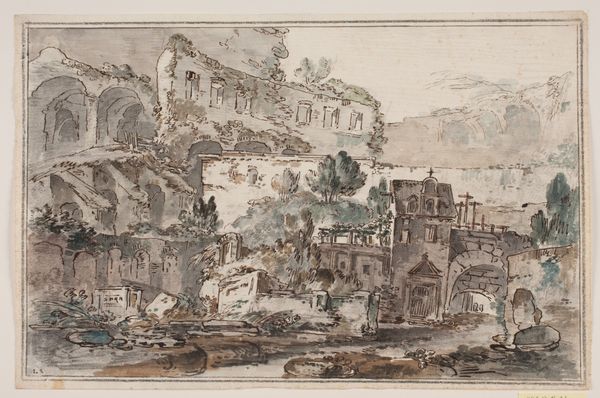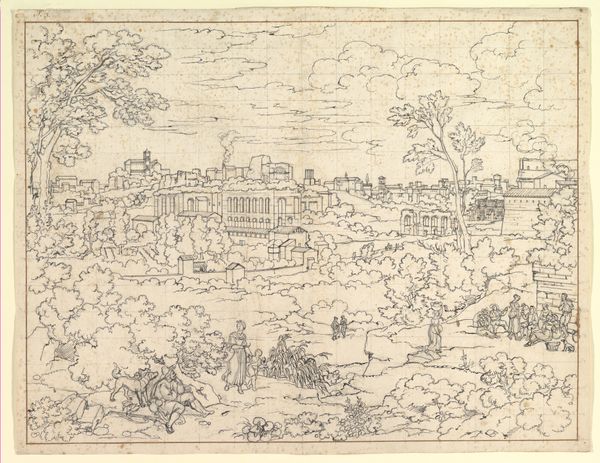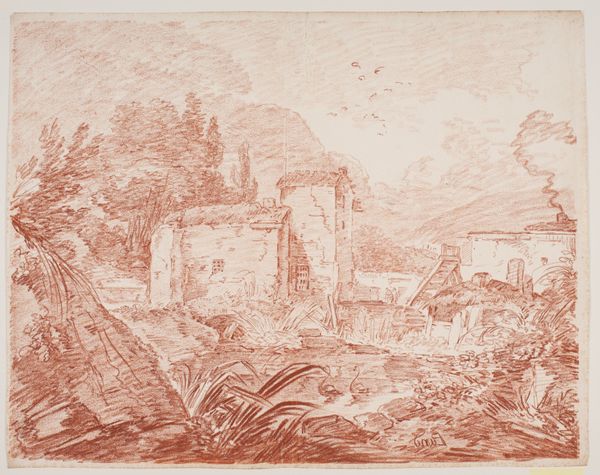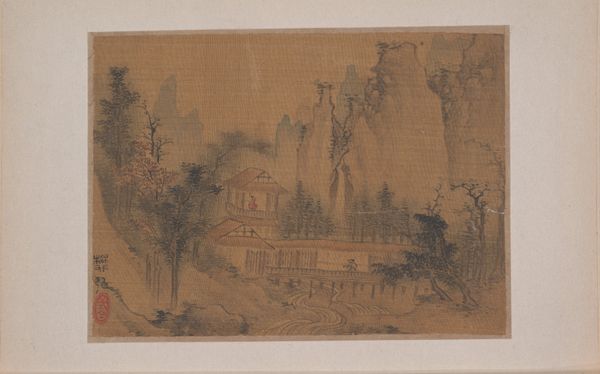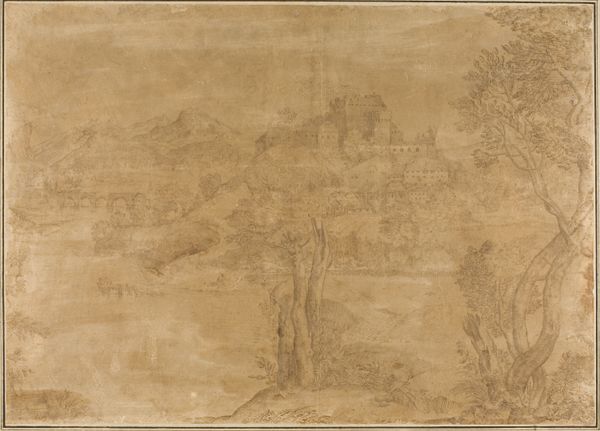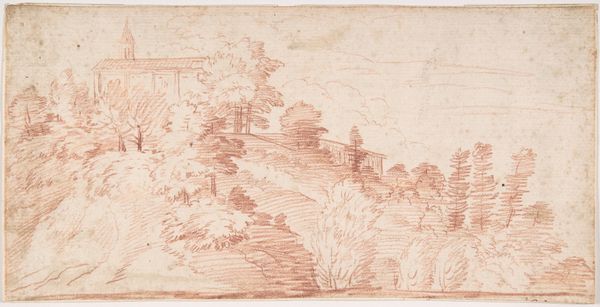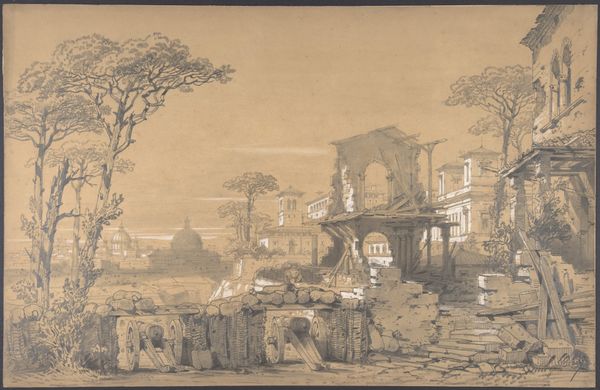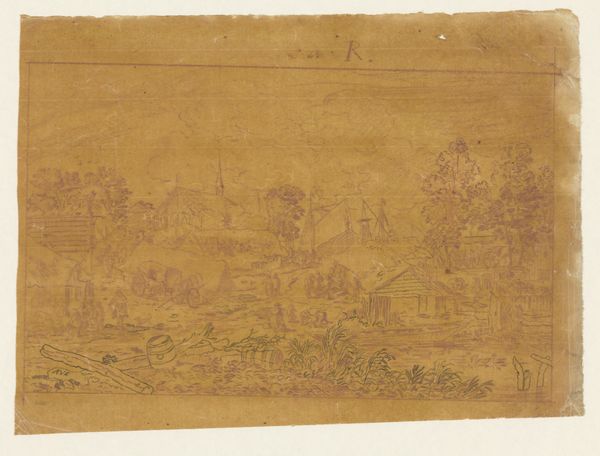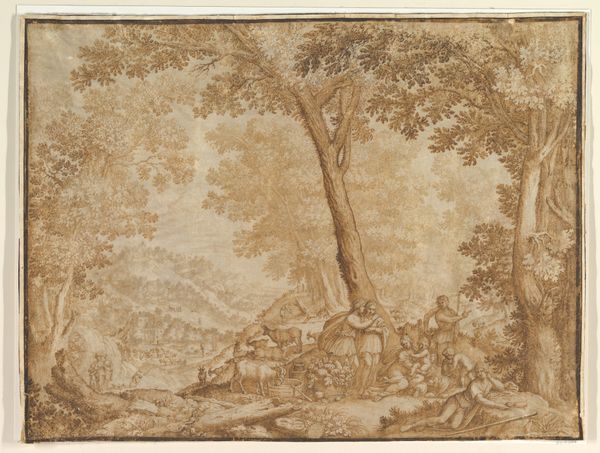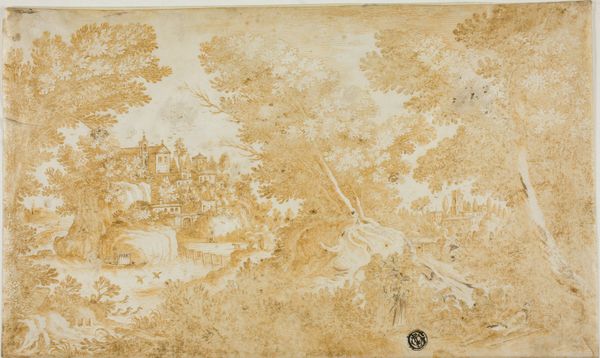
A Classical Landscape with Buildings by a River 1620 - 1675
0:00
0:00
drawing, print, paper, ink
#
drawing
#
toned paper
#
baroque
# print
#
landscape
#
classical-realism
#
river
#
paper
#
oil painting
#
ink
#
cityscape
#
building
Dimensions: 5 7/8 x 7 3/8 in. (14.9 x 18.7 cm)
Copyright: Public Domain
Curator: We're looking at "A Classical Landscape with Buildings by a River" created sometime between 1620 and 1675. The artist is Sebastien Bourdon, and the work, currently residing at the Metropolitan Museum of Art, is rendered in ink on toned paper. Editor: My first impression is a sense of faded grandeur, like looking at a memory. The sepia tones give it a real aged feel. The buildings seem imposing, but softened by the river and the surrounding landscape. Curator: The "Classical" in the title speaks volumes, doesn’t it? This era saw artists looking back to idealized visions of the past. Bourdon situates architecture amidst nature, echoing classical themes of harmony and balance, and the paper itself becomes a document in this historical dialogue. What were the power dynamics inherent in these constructed landscapes? Who had access, and how was that access visually represented? Editor: It’s interesting you bring up access, because although the overall effect is quite serene, the visible sketches and unfinished lines do betray a process – labor, even – that’s usually concealed in the final product. You get a glimpse behind the idealized facade. There’s an authenticity there that resonates beyond the Baroque, beyond the classical ideals. Curator: Precisely. Bourdon isn't just representing a landscape, he’s engaging in a conversation about representation itself. How are ideas of landscape tied to colonial power? In the historical record, landscapes often acted as instruments to validate control over territories, obscuring Indigenous presence while glorifying resource extraction. Considering the socio-political contexts of the period helps us unpack those power structures that continue to affect marginalized communities. Editor: Looking at the river, though, I also see possibility and change. It bisects the composition and, symbolically, life courses through and around these monuments. Curator: I agree, water’s a dynamic symbol here. I am led to think about rivers historically serving as arteries of commerce, often used in colonial projects of resource extraction that devastated local populations and ecosystems. Editor: That intersection, where natural beauty meets constructed artifice and those histories intertwine, is really what makes this piece so compelling. It invites us to look beyond the surface and contemplate not only the scene, but the forces that shaped its creation and our perception of it. Curator: A landscape concealing more than it reveals... Thank you for these crucial insights that prompt further study and discussions. Editor: Absolutely. It's a reminder that art is not created in a vacuum, but in dialogue with power, history, and, ultimately, us.
Comments
No comments
Be the first to comment and join the conversation on the ultimate creative platform.

